Advertisements
Advertisements
Question
If potential difference between the two ends of a metallic wire is doubled, drift speed of free electrons in the wire ______.
Options
Remains same.
Becomes double.
Becomes four times
Becomes half
Solution
If potential difference between the two ends of a metallic wire is doubled, drift speed of free electrons in the wire becomes double.
Explanation:
Drift velocity `= v_d = (eVτ)/(ml)`
When V is Potential difference
According to question, V = 2V
Then `v_d = (2eVτ)/(ml)`
= `2v_d`
Hence, drift velocity also becomes double.
APPEARS IN
RELATED QUESTIONS
In the figure shown, an ammeter A and a resistor of 4 Ω are connected to the terminals of the source. The emf of the source is 12 V having an internal resistance of 2 Ω. Calculate the voltmeter and ammeter readings.
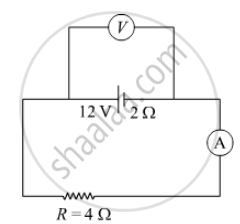
A metal rod of square cross-sectional area A having length l has current I flowing through it when a potential difference of V volt is applied across its ends (figure I). Now the rod is cut parallel to its length into two identical pieces and joined as shown in figure II. What potential difference must be maintained across the length of 2l. so that the current in the rod is still I?

Explain the principle of a device that can build up high voltages of the order of a few million volts.
Draw a schematic diagram and explain the working of Van de Graff generator device.
Find the potential difference `V_a - V_b` between the points a and b shown in each part of the figure.
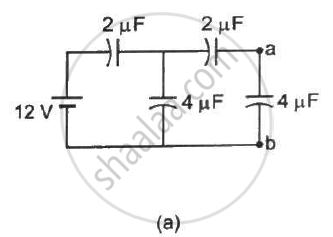
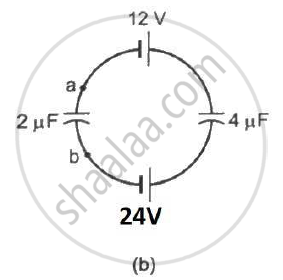
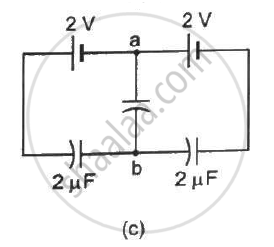
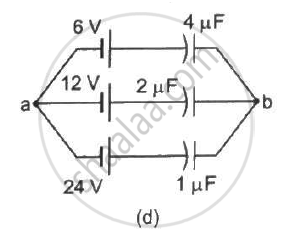
Two metal pieces having a potential difference of 800 V are 0.02 m apart horizontally. A particle of mass 1.96 × 10–15 kg is suspended in equilibrium between the plates. If e is the elementary charge, then charge on the particle is ______.
- It depends only on the initial and final position.
- It is the work done per unit positive charge in moving from one point to other.
- It is more for a positive charge of two units as compared to a positive charge of one unit.
A and B are two points in an electric field. If the work done in carrying 4.0C of electric charge from A to B is 16.0 J, the potential difference between A and B is:
An α-particle and a proton are accelerate at same potential difference from rest. What will be the ratio of their final velocity?
On moving a charge of 20 C by 2 cm, 2 j of work is done then the potential difference between the point is:-
